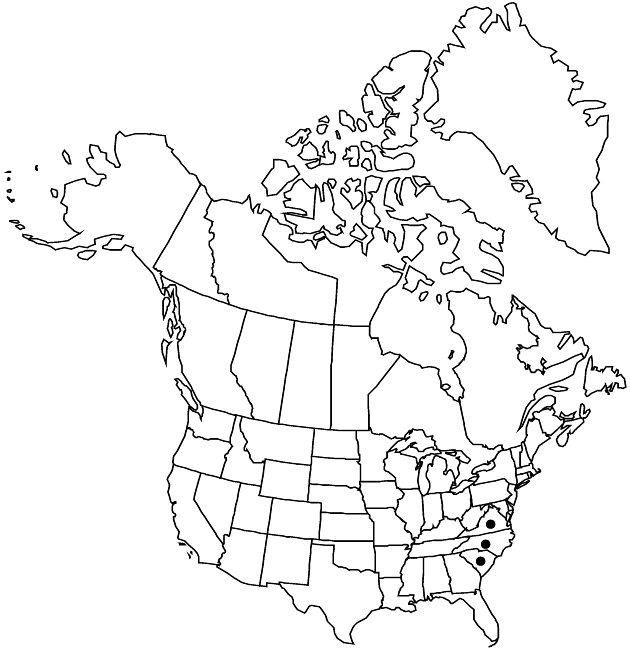Solidago pinetorum
Fl. S.E. U.S., 1200, 1339. 1903.
Plants 40–110 cm; caudices branched, woody, new rosettes arising at bases of old stems or at ends of 0.5–5 cm rhizomes. Stems 1–5+, ascending to erect, slender, glabrous; distal axils bearing short lateral branches with several spreading leaves. Leaves: basal blades mostly linear-oblanceolate, 40–160 × 10–20 mm, smallest (10 mm) nearly spatulate, margins shallowly serrate or subentire, sometimes ciliate, ± strongly 3-nerved, apices obtuse to mostly acute, faces glabrous; mid and distal cauline spreading to reflexed, blades linear, 15–60 × 1–4 mm, reduced to linear bracts in arrays, glabrous. Heads 50–350, secund, in paniculiform arrays, openly secund-pyramidal with proximal branches spreading recurved, or as broad as long with proximal branches widely ascending, recurved (elm-tree shaped). Peduncles 1–5 mm, bracts 0–5, linear-lanceolate, 1–3 mm, distal grading into phyllaries. Involucres narrowly campanulate, 3–4 mm. Phyllaries in 2–3 series, strongly unequal, oblong-lanceolate, obtuse to rounded, glabrous. Ray florets 3–7; laminae 2–3 × ca. 0.5 mm. Disc florets 5–9; corollas 3–3.5 mm, lobes 0.5–0.8 mm. Cypselae (obconic) 1 mm (with several prominent ridges), glabrous or slightly hairy distally; pappi 2–3 mm. 2n = 18.
Phenology: Flowering Jul–Sep.
Habitat: Open places and dry woods, especially in sandy soil, rocky sand bars
Elevation: 0–400(–700) m
Distribution

N.C., S.C., Va.
Discussion
Solidago pinetorum is found in the Piedmont and the Atlantic coastal plain.
Selected References
None.